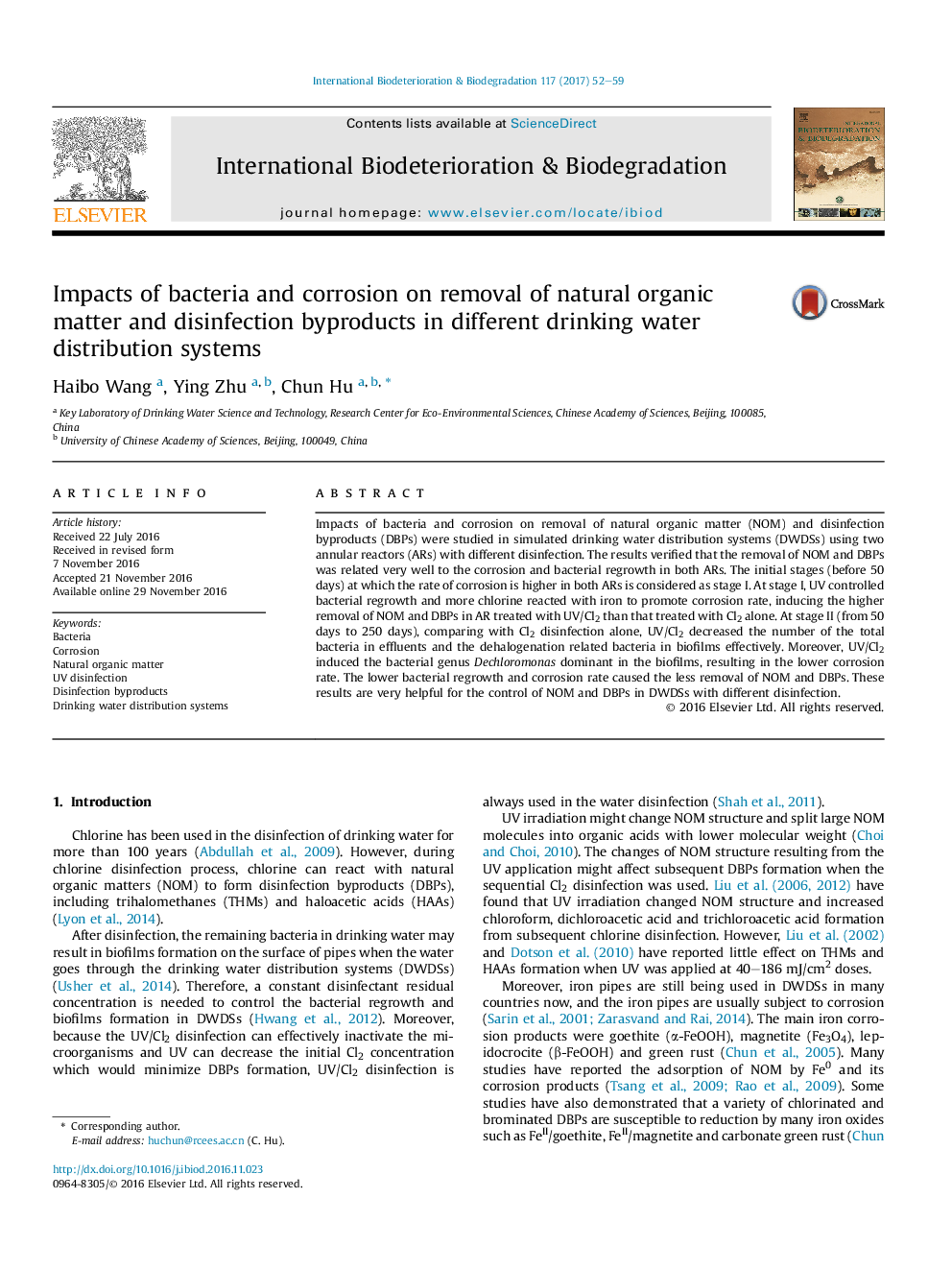| Article ID | Journal | Published Year | Pages | File Type |
|---|---|---|---|---|
| 5740509 | International Biodeterioration & Biodegradation | 2017 | 8 Pages |
â¢Impacts of bacteria and corrosion on removal of NOM and DBPs were studied.â¢40 mJ/cm2 UV dose had little effect on the changes of NOM structure.â¢Chlorine reacted with phenolic OH groups and C-H of aromatic ring to form DBPs.â¢UV/Cl2 disinfection controlled the bacterial regrowth and corrosion rate in AR.â¢Lower corrosion rate and bacterial regrowth decreased the removal of NOM and DBPs.
Impacts of bacteria and corrosion on removal of natural organic matter (NOM) and disinfection byproducts (DBPs) were studied in simulated drinking water distribution systems (DWDSs) using two annular reactors (ARs) with different disinfection. The results verified that the removal of NOM and DBPs was related very well to the corrosion and bacterial regrowth in both ARs. The initial stages (before 50 days) at which the rate of corrosion is higher in both ARs is considered as stage I. At stage I, UV controlled bacterial regrowth and more chlorine reacted with iron to promote corrosion rate, inducing the higher removal of NOM and DBPs in AR treated with UV/Cl2 than that treated with Cl2 alone. At stage II (from 50 days to 250 days), comparing with Cl2 disinfection alone, UV/Cl2 decreased the number of the total bacteria in effluents and the dehalogenation related bacteria in biofilms effectively. Moreover, UV/Cl2 induced the bacterial genus Dechloromonas dominant in the biofilms, resulting in the lower corrosion rate. The lower bacterial regrowth and corrosion rate caused the less removal of NOM and DBPs. These results are very helpful for the control of NOM and DBPs in DWDSs with different disinfection.
